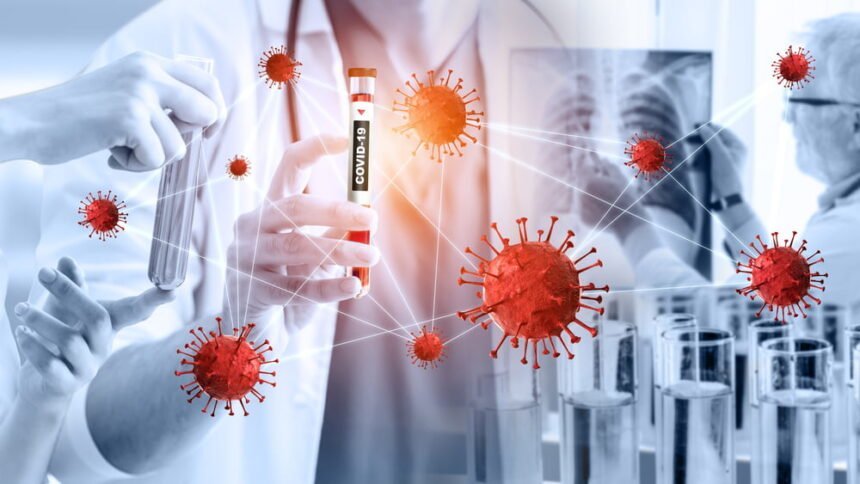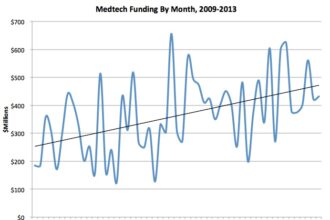The novel Coronavirus (COVID-19) has changed how many industries conduct operations today and are likely to do so in the future. The field of healthcare is no exception.
Below we discuss five important changes to the medical industry which resulted from the COVID-19 pandemic and appear to be here to stay.
1. Promoting Remote Patient Monitoring
In healthcare, COVID-19 accelerated the pivot in certain aspects of care which were already underway, such as the now widespread use of virtual appointment as state governments issued mass stay-at-home orders to keep the population safe. People were asked to shelter in place and quarantine if they have been exposed to an infected individual.
New technologies and apps, such as COVID Watch (as highlighted by U.S. News & World Report) were developed, which enabled COVID-19 patients, who were at home, to monitor and report their symptoms through their phones. Another example of an app oriented to symptom monitoring and tracking is ZOE’s COVID Symptom Tracker App, which millions of individuals are using every day, even when they are feeling well. Apps like these can help researchers identify COVID-19 infection clusters more quickly and then deploy healthcare resources where they are needed…enabling better patient care.
2. Observing Those Who Are Highly Contagious
Medical industry professionals had to act quickly to deal with a highly transmissible virus in hospital settings and ensure protocols were enacted and adjusted to minimize any in-hospital transmission.
Many hospitals and clinics have adapted their setups to include the use of live feed video cameras and extra layers of personal protective equipment (PPE). Hospital staff can now monitor and interact with those who are contagious while remaining socially distanced. When direct interaction is required, layering PPE (such as single-use disposable gowns over hospital scrubs, face shields over N95 masks, etc.) provides the greatest protection from infection for the caregiver. This adjustment has kept many healthcare workers from being exposed to the virus.
3. Masks All of the Time
In some settings, such as hospitals, convalescent care, or group living facilities, leaders are considering a pivot to team members wearing masks 24/7/365. Affected employees include not just nurses and doctors but anyone working in a highly infectious area.
A recent report in JAMA Internal Medicine indicated doctors from NYC Health + Hospitals plan to keep wearing masks when in the hospital, even if COVID-19 were to be eliminated (which is unlikely). Even those that may not have significant direct contact with patients, such as custodial staff and receptionists, may be forced to wear masks all the time as a safety precaution to themselves and others in these places.
4. Medical Supply Chains Workers Must Be Protected
Early in the pandemic, companies realized that in order to keep goods and services flowing, personnel needed to be properly protected from a highly transmissible virus. Acknowledging that a one-size-fits-all approach would not work, many companies developed unique approaches to protecting their employees.
For example, a medical cable assembly and interconnect solution team supporting the production of essential medical devices quickly implemented new means of ensuring employee safety. They changed processes, such as adding video conferences, to help with social distancing as well as requiring masks, and separation of assembly staff by 6ft. They also offered COVID-19 tests and provided PPE to supply chain workers.
5. Provide Greater Support to Healthcare Workers
It is widely acknowledged that healthcare workers have suffered significant hardships throughout the pandemic. These include long hours, scarce resources, occasionally combative patients, and the emotional toll that comes with deaths associated with the sickest COVID-19 patients. The impact has been so significant that some in the industry have considered leaving the profession altogether, which could further exacerbate the stressors on these important people.
Furthermore, during the darkest days of the pandemic, many healthcare workers had to forego the usual support structure of friends and family for fear of exposing their loved ones to COVID. That meant that even when they returned home after another overtime shift on the front lines, they could not interact with their families like normal.
The American Medical Association weighed in on this topic recommending that we improve the distribution of the workload across healthcare workers. This could be achieved by increased implementation of telemedicine to greater cross-training of employees so more staff have the necessary skills to support increased demand for intensive care. Along these lines, support systems were created in the pandemic which do not appear to be going away anytime soon, including:
- Tracking stress and stress drivers to help employees maintain their health and well-being
- Providing meals to affected workers, recognizing the value of providing this type of care and concern
- Offering child/pet care to provide a respite and allow for downtime
- Offering support spaces for workers with increased access to counseling and other help they may need
Preparing for the Future
With the World Health Organization reporting 236,132,082 confirmed cases of COVID-19 (which includes 4,822,472 deaths) as of early-October 2021, we are still not out of the woods yet. Yet, amidst the devastating effects of COVID-19, we have learned from the pandemic to do better in the future.
Some of the practices implemented during the pandemic will be in place for years to come, from the universal use of masking among medical professionals, to allowing patients to monitor themselves using remote monitoring apps, to virtual appointments enabled by telemedicine. The medical industry adapted quickly to the current threat and is well positioned for the future.







